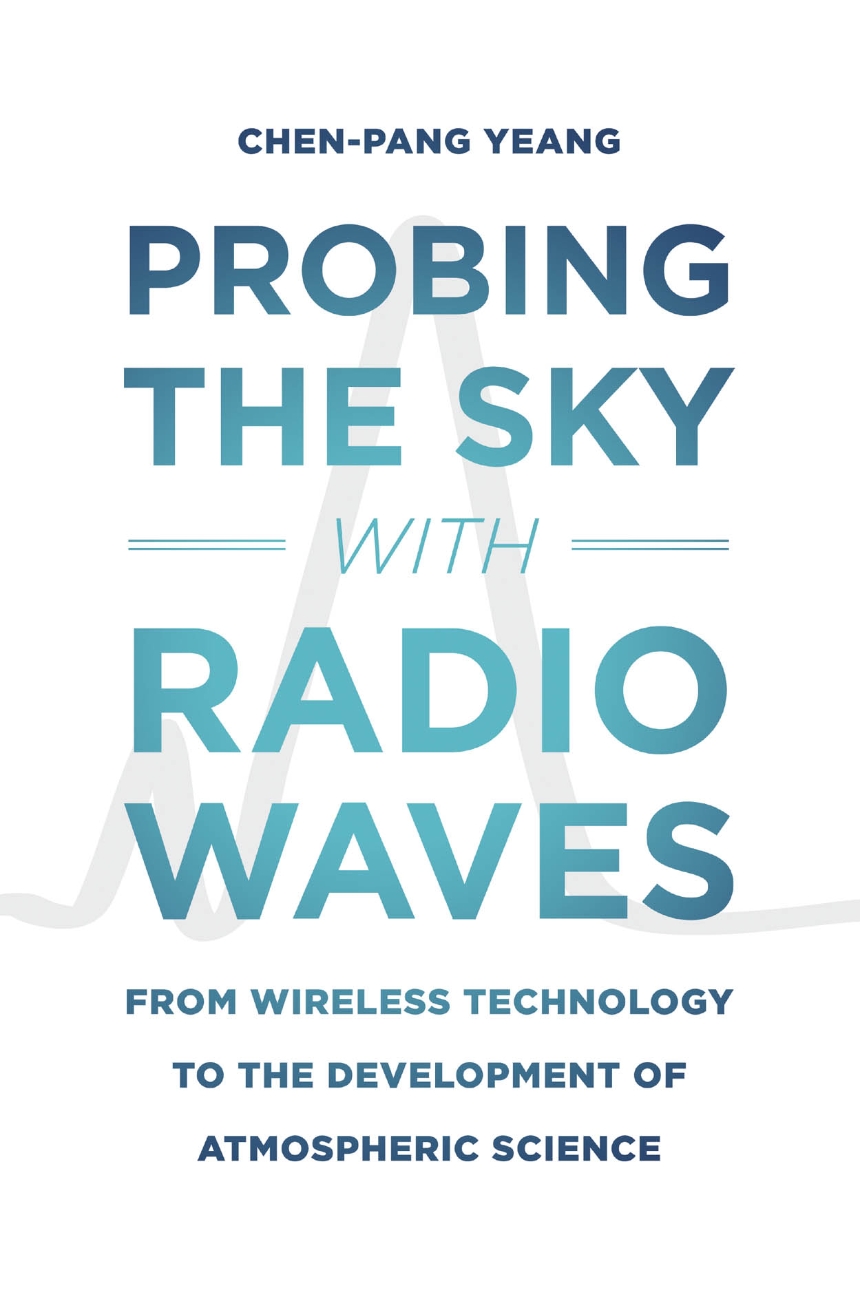Probing the Sky with Radio Waves
From Wireless Technology to the Development of Atmospheric Science
9780226274393
9780226015194
9780226034812
Probing the Sky with Radio Waves
From Wireless Technology to the Development of Atmospheric Science
By the late nineteenth century, engineers and experimental scientists generally knew how radio waves behaved, and by 1901 scientists were able to manipulate them to transmit messages across long distances. What no one could understand, however, was why radio waves followed the curvature of the Earth. Theorists puzzled over this for nearly twenty years before physicists confirmed the zig-zag theory, a solution that led to the discovery of a layer in the Earth’s upper atmosphere that bounces radio waves earthward—the ionosphere.
In Probing the Sky with Radio Waves, Chen-Pang Yeang documents this monumental discovery and the advances in radio ionospheric propagation research that occurred in its aftermath. Yeang illustrates how the discovery of the ionosphere transformed atmospheric science from what had been primarily an observational endeavor into an experimental science. It also gave researchers a host of new theories, experiments, and instruments with which to better understand the atmosphere’s constitution, the origin of atmospheric electricity, and how the sun and geomagnetism shape the Earth’s atmosphere.
This book will be warmly welcomed by scholars of astronomy, atmospheric science, geoscience, military and institutional history, and the history and philosophy of science and technology, as well as by radio amateurs and electrical engineers interested in historical perspectives on their craft.
384 pages | 3 halftones, 68 line drawings | 6 x 9 | © 2013
Earth Sciences: History of Earth Sciences
History: History of Technology
Physical Sciences: History and Philosophy of Physical Sciences
Reviews
Table of Contents
Acknowledgments
Chapter 1: Introduction: From Propagation Studies to Active Sensors
From Propagation Studies to Active Sensing: Experiment and Theory
Field Experiments and Direct Evidence
Epistemic Status of Theories
Where This Book Fits In
Outline of Chapters
A Note on Units
Chapter 1: Introduction: From Propagation Studies to Active Sensors
From Propagation Studies to Active Sensing: Experiment and Theory
Field Experiments and Direct Evidence
Epistemic Status of Theories
Where This Book Fits In
Outline of Chapters
A Note on Units
PART I: Conceiving Long-Range Propagation, 1901-19
Chapter 2: Theorizing Transatlantic Wireless with Surface Diffraction
European Theoretical Physicists and Wave Propagation
Surface Diffraction Theory in Britain and France
Macdonald’s Initiative
Rayleigh’s Coup
Poincaré’s Formula
Nicholson’s Numbers
Surface Diffraction Theory in Germany
Antenna Directivity and Zenneck’s Surface Waves
Sommerfeld’s Refinement of Surface Waves
Chapter 3: The U.S. Navy and the Austin-Cohen Formula
A Naval Wireless Laboratory
The Experiment
The Formula
Chapter 4: Synthesis with Atmospheric Reflection
Surface Diffraction after Austin-Cohen
The German Story
A New Experiment
The British Response
Atmospheric Reflection Theory
Kennelly-Heaviside Layer
Eccles’s Ionic Refraction
Watson’s Synthesis and Its Acceptance
The 1918 and 1919 Papers
Consolidating the Watson-Austin-Cohen Paradigm
PART II: Discovering the Ionosphere, 1920-26
Chapter 5: Radio Amateurs Launch the Short-Wave Era
American Radio Amateurs in the Early Twentieth Century
Fading Experiments
Standard Experimental Procedure and Data Format
Setting the Stage for Transatlantic Experiments
Transatlantic Experiments
The First Trial
The Second Trial
The Third Trial
The Two-Way Test and the Fourth Trial
Chapter 6: From the Skip Zone to Magneto-Ionic Refraction
Discovering the Skip Zone and Short-Wave Data
Albert Hoyt Taylor and the U.S. Naval Research Laboratory
Discovery of the Skip Zone
More Comprehensive Range Data at High Frequencies
Magneto-Ionic Theory for Short Waves
Eccles’s Ionic Refraction Theory
Larmor’s Ionic Refraction Theory
Effects of Geomagnetism: Nichols, Schelleng, and Appleton
Explaining the Skip Zone: Taylor and Hulburt
Chapter 7: British Radio Research and the Moments of Discovery
Direct Evidence, Sounding-Echo Experiments, Operational Realism
A British System of Radio Ionospheric Research
Direction Finding, Wave Polarization, and the Ionosphere
Loop Direction Finders and Their Problems
Thomas Eckersley’s Work on Polarization
National Physical Laboratory, Radio Research Board, and Reginald Leslie Smith-Rose
Smith-Rose and Barfield’s Experiment
Frequency-Change Experiments and Discovering the Ionosphere
Edward Victor Appleton
The Frequency-Change Experiment
Smith-Rose and Barfield Try Again
Improving Direction Finding as a By-product
Chapter 8: Pulse Echo, CIW, and Radio Probing of the Ionosphere
Pulse-Echo Experiments in the United States
Carnegie Institution of Washington, Gregory Breit, Merle Tuve
Pulsed Radio Sounding of the Ionosphere
The Meaning of Height
The Ionosphere has a Structure
Appleton’s Program of Ionospheric Sounding
The Discovery of the F Layer
PART III: Theory Matters, 1926-35
Chapter 9: Consolidating a General Magneto-Ionic Theory
Generalizing the Magneto-Ionic Theory
Appleton and Altar’s Derivation
Lassen’s Derivation
Goldstein’s Derivation
Measuring Polarization in Both Hemispheres
A Polarimetric Experiment
More Polarization Research in Both Hemispheres
A Mathematical Inquiry into the General Magneto-Ionic Theory
Chapter 10: Handling Microphysics
The Lorentz Correction
Origin of the Concept
Douglas Hartree and the Lorentz Correction in Ionic Refraction
A Microphysical Controversy without Microphysics
Where Was the Empirical Evidence?
The Quasi-Elastic Force
Measuring the Dielectric Constant of Ionized Air
A Propagation Theory from Tabletop Experiments
Anatomy of a Debate
Death of a Theory
PART IV: Conclusion
Chapter 11: A New Way of Seeing the World
From Wave Propagation Studies to Ionosphere Probing
A Case History for Active Sensing
Bibliography
Index
Awards
Atmospheric Sciences Librarians International: ASLI Choice Award
Honorable Mention
